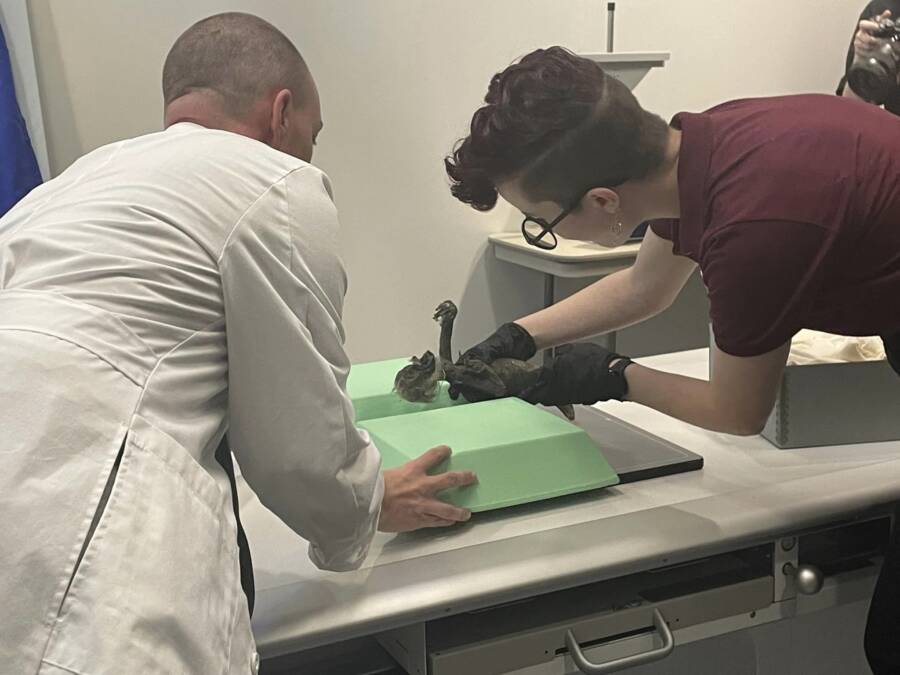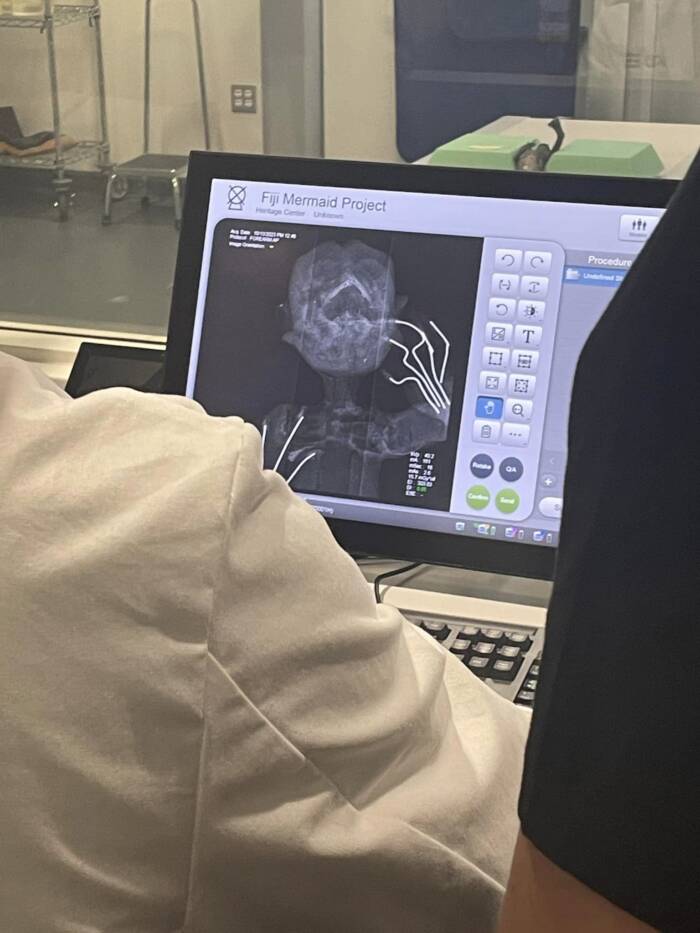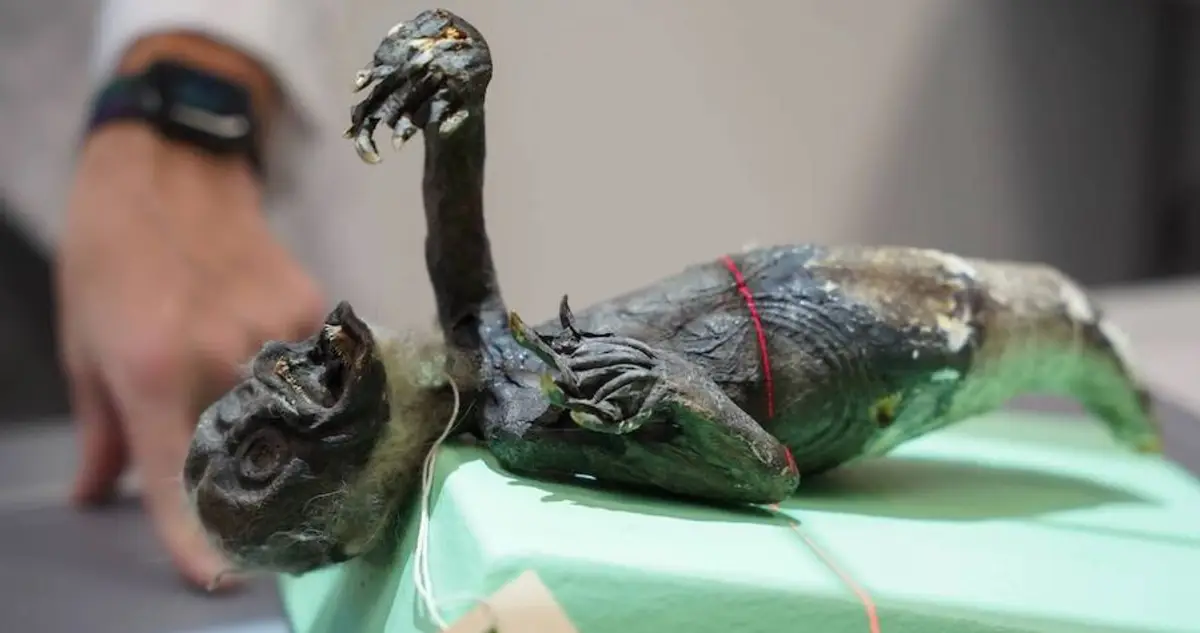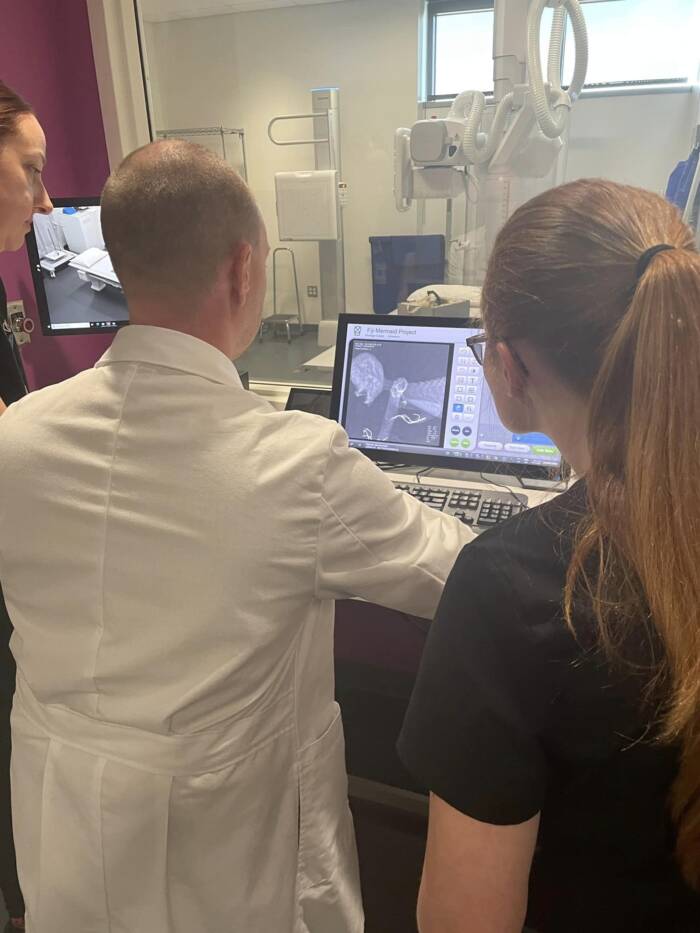The creature appears to be a hodgepodge of at least three species, and was likely displayed in 19th-century sideshows.

Clark County Historical Society at the Heritage Center/FacebookThe “mermaid” seems to be a Frankenstein creation of monkey, fish, and reptile.
In 1906, a Navy sailor named L.C. Bishop returned home to Ohio from Japan with a curious souvenir: the remains of what appeared to be a tiny, clawed, grimacing “mermaid.” Now, researchers at Northern Kentucky University (NKU) are examining the object to see if they can decipher its origins.
“As something that’s been a part of our collection for so long — 117 years — I know that I’m personally excited to have some answers,” Natalie Fritz, an archivist for the Clark County Historical Society at the Heritage Center where the mermaid was originally donated, told the Springfield News-Sun.
Radiology students at NKU used x-ray and CT scans to examine the curious object, and now believe that it’s a Frankenstein of at least three species. It contains monkey, fish, and reptile parts.

Clark County Historical Society at the Heritage Center/FacebookRadiology students scanning the “mermaid.”
“It seems to be a hodgepodge of at least three different species externally,” Joseph Cress, an NKU radiologist who examined the creature, explained to the Daily Mail. “There’s the head and torso of a monkey, the hands seem to be that of an amphibian almost like an alligator, crocodile, or lizard of some sort. And then there’s that tail of a fish — again, species unknown.”
Cress added: “It is obviously fashioned, almost Frankensteined together — so I want to know what parts were pulled together.”
The scans also revealed something about the object’s construction. The Springfield News-Sun reports that it contained wooden rods, metal that appeared to be holding the claws in place, cotton stuffing in the body, and some kind of “papier-mâché structure” that gave the creature form.

Clark County Historical Society at the Heritage Center/FacebookA scan of the mermaid mummy revealed wooden rods, metal, cotton stuffing, and a “papier-mâché structure.”
But why make such a strange object in the first place?
Fritz explained that it was likely a “Fiji Mermaid,” a popular sideshow attraction in the 19th century.
“Fiji Mermaids were a part of collections and sideshows in the late 1800s,” she said, noting that Bishop, who donated the mermaid, served in Japan in the 1870s and likely picked it up around then.
In the United States, such objects were popularized by showmen like P.T. Barnum. The Daily Mail reports that he even exhibited a similar “mermaid” at his American Museum in New York until it burned down in 1865.

The mermaid donated by Bishop was apparently similarly displayed around town in Ohio, as Fritz noted that people in the community have started coming forward to share their memories of seeing it.
“Some remember seeing it on display in Memorial Hall, the home of the historical society from 1926 to 1986,” she explained. “One woman, whose father was the curator in the 1970s recalls that it ‘scared her to death’ when she would visit her dad at work.”
That said, there’s still more that researchers are hoping to learn about the object.
“There were a LOT of images taken, especially with the CT scan, so they still have a lot of data to sort through to give us more detailed answers,” the Clark County Historical Society explained in a Facebook post.

Clark County Historical Society at the Heritage Center/FacebookResearchers are eager to keep poring over the scans of the mermaid to better understand its construction.
To the Daily Mail, Cress explained that he and researchers are hoping to closely examine every part of the mysterious mermaid.
“Do those nostrils continue up into what we think is a legitimate nasal cavity, and how deep do they go?” he asked. “Can you see the ear cavity continuing to where it would then connect to the brain?”

Next, the data about the mermaid will also be sent to the Cincinnati Zoo and the Newport Aquarium so that experts there can try and determine exactly which species were used to make it. And the Clark County Historical Society is eager to share what they find. As they said on Facebook:
“We’re excited to be able to share more information on this ‘weird little guy.’”





